14 Biggest Movie Mysteries In Cinema History That Never Get Solved
In most mystery/thriller movies, the final explanation is unfolded before the credits start to roll. However, that's not always the case; in fact, some of the best films of all time have endings that purposefully leave at least one significant loose end hanging.
Although ambiguity in movies can be considered a positive thing because it inspires viewers to actively engage with the tale in order to find solutions and promotes additional conversation, it can also be quite annoying!
After all, curiosity is a fundamental aspect of human nature, and just as we yearn to learn the secret to a magic trick, we are compelled to discover the conclusive answers to these cinematic questions.
When it comes to mystery films, the huge payoff when there is a big reveal at the end of the movie is just as important as the adventure itself. Without a climax, cinematic twists and turns of a movie can either leave an audience dissatisfied or enable them to make exciting theories and discussions. Here are 14 unsolved movie mysteries that leave you hanging and desperate for the ultimate reveal.
Anderton embarks on a protracted path of grief and acceptance as a result of the mystery surrounding Sean's abduction. At first, Anderton holds unwaveringly to the notion that Precrime can shield other parents from suffering the same horrors. However, when he is set up to kill Crow, the notion that mediums can accurately foretell the future is called into question. Anderton is motivated by this uncertainty to investigate the murkiness at the heart of crime and the fatal secrets kept by its creator (Max Von Sydow). By doing this, he can accept the heartbreaking reality that not all crimes can be understood, much less foreseen, and that he will never know what happened to his kid.
In the end, Dixon makes an effort to keep Mildred from harming herself. He assists in obtaining the DNA evidence necessary to establish the suspect's guilt after overhearing a stranger confess to the rape and murder of a teenager. Even though it turns out that the man is not guilty of the crime, Mildred is still set on killing him. She and Dixon have loaded a rifle into the back of her station wagon and are on the road in search of him towards the conclusion of the film. Mildred has given up on the idea of catching the person who killed her daughter, but she is still committed to getting even. The conclusion is unclear. Mildred and Dixon acknowledge having reservations about the assignment just before the credits start to roll, but the audience is never informed of their decision to carry out the murder. The film depicts a vengeance story without a specific victim, exposing the moral ambiguity of making heroes out of people who use violence to express their sadness.
Rarely, like in The Pledge, do the characters not know the truth but the spectator does. Black will never be aware that the bad person is no longer alive. He will undoubtedly believe that the man is still out there committing terrible crimes for the rest of his life. This not only adds a tragic depth to an already painful story but also injects some realism. Even in the world of focused detective novels, natural forces are constantly at work. Black is a man whose obsession is so strong that he would never consider that something as unimportant as a vehicle accident may end the mystery. Black is doomed to be tormented by his preoccupation until it consumes him in the film since he is never given information about the killer's fate, making him oblivious that the case has already been solved.
James Gray, the film's writer and director, made the decision to embrace the story's inherent ambiguity. He utilizes the conclusion to commemorate Fawcett and Nina's commitment to pursuing the unknown rather than providing a definitive solution to the riddle. In the version of the disappearance depicted in the film, Indians capture Percy (Charlie Hunnam) and Jack (Tom Holland). The Indians decided to "find a place for his spirit" after determining that Fawcett is neither a member of the tribe nor a part of the outside world. The men are drugged and carried on their shoulders through the pitch-blackness in the direction of a sea of glistening lights. A massive plume of smoke can be seen off in the distance, suggesting a sizable settlement. In a flashback that cuts between one event and another, Nina implores Fawcett to remember the poet Robert Browning's famous words, "A man's reach should transcend his grasp, or what's a heaven for?" Several decades after her abduction, Nina is seen leaving the conservative Royal Geographic Society in London in the film's last frame. She seems to step right into the lush Amazon in the hallway mirror's reflection. The movie honors the spirit of Fawcett's adventurousness and Nina's yearning to join him by asserting its version of events as fantasy rather than history by presenting such a surreal final image.
Picnic at Hanging Rock is probably a frustrating movie to watch for anyone who likes simple mysteries. Even while the headmistress of the students says there must be a plausible explanation, its emphasis on gauzy images and cryptic reflections on the natural world offer no opportunity for a rational deduction. Since the mystery has never been solved, there are many possible explanations, including the likelihood that nothing happened or that a supernatural force is responsible for everything. Some see the film as a metaphor for the alienation that white European settlers of Australia feel toward the strange, foreign land they live in. Weir was enthralled by the concept of what it meant to vanish, to "be neither alive nor dead." He says that certain riddles are not meant to be answered.
Before the movie's filming started, Kurosawa's three assistant directors contacted him, upset by the script's ambiguity and curious as to who had conveyed the truth about the samurai's dying. If they thoroughly read it, they would understand, Kurosawa retorted. He was saying that the character traits that the many stories of the events convey about each participant, not who killed the samurai, were the key to solving the mystery. A more exact truth is shown by the four eyewitness accounts of the incident than by a mere retelling of the events.
In large part in response to the Clint Eastwood film, Dirty Harry, which is also based on the case, Fincher was keen to make Zodiac historically correct. Fincher believed that the Zodiac Perpetrator's simplicity and dread were oversimplified in Eastwood's film, undermining the efforts of the real-life investigators who worked on the unsolved case. Fincher was "[a]ppalled" by how simply the killer is identified in the film. Zodiac isn't a tight whodunit; instead, it focuses on Graysmith's growing fixation with the unanswered question and the lingering impact of one of the most notorious serial killers in American history.
Sophie believes she needs her father to convince her to walk down the aisle, but while looking for him, she discovers issues with her mother that needs to be worked out. Sophie gains four new parents, not one: In addition to finding loving father figures in the three men, she rekindles her relationship with her mother, who finally receives the distinction of leading her daughter down the aisle. In the end, they all agree that a paternity test would be detrimental rather than helpful. All three guys can be equally loving and valuable in Sophie's life as long as the question is left unanswered. Mamma Mia! evolves into a mother/daughter love story that considers the broader definition of family from what appears to be a basic rom-com with a predictable ending.
Anna's disappearance is used by L'Avventura to highlight the disregard for those who are left behind. It's a very beautiful exposé of self-involvement. The protagonists' lovely features and their opulent surroundings contrast sharply with the nothingness at the center of their universe. The attention shift, which obscures the mystery surrounding Anna's mysterious absence in favor of the drama between Sandro and Claudia, is as detrimental to the audience as it is to the characters. As the film goes on, Anna's dissatisfaction with her privileged life is increasingly comprehensible. She came out as spoiled and disrespectful at first. By the time the story is over, she seems to be the only one still aware of the self-inflicted suffering they are all experiencing.
But it's obvious that this isn't the case. An unpleasant encounter between Don and a teenage hitchhiker exposes how devoted he is to be a father and gives Don optimism that he has at last met his son. At the end of the film, Don stands by himself in the middle of the street, starting over. But as opposed to the emotionlessness he displayed at first, the look on his face is more indicative of remorse and regret. Don hasn't found the answer to the riddle of the anonymous letter, but in trying to learn the truth, he's changed from being uncaring to having a sense of longing.
The film's concluding shot adds bold, unexpected punctuation to the ambiguous conclusion. Over ten years after failing to solve the case, Park, who is now a salesman, goes back to the unassuming scene of the first incident in 2003. A young girl approaches and remarks that another man had just left while remembering something he had done there decades earlier. In order to look straight into the audience and break the fourth wall, Park turns his head toward the camera. He is still looking for the precise moment of eye contact that, in his opinion, will reveal the offender. The fact that the genuine serial killer was found in 2019 does little to lessen the impact of this ultimate blow. Memories of Murder emphasizes the immediacy and proximity of the past by focusing on how the two cops' failed inquiry haunts them. Some wounds never heal, even if they just exist in memory, whether they are the result of a cold case or an authoritarian administration.
This story looks to be another case of Larry receiving poor spiritual counsel. However, in actuality, it serves as an example of the philosophical premise of the entire film. The Torah's teaching to "Receive with simplicity all that happens to you" serves as the movie's epigraph. Physics professor Larry explains the Uncertainty Principle, a formula that demonstrates that "we can't really actually know what's going on," as the mathematical counterpart of this adage. But as the misfortune mounts, Larry becomes more and more adamant that there is no meaning to his suffering. The goy's teeth tale serves as an example of how certain mysteries—even those that must have an answer—cannot be resolved and how contentment comes from embracing the state of unresolvedness. The Uncertainty Principle and the value of giving up curiosity in favor of acceptance are both reinforced just when Larry seems to have finally assimilated this lesson.
The recordings expose Georges' shame and secrecy that he has endured since lying about Majid. His growing paranoia and attempts to reveal the man end up acting more like retaliation than like repentance, which causes yet another disaster. Even though the identity of the person who made the tapes remains unknown by the film's conclusion, Georges is unable to continue to live happily in his middle-class bubble. A meeting between Pierrot and Majid's son is depicted in the film's closing frame, which some viewers have deduced to be the solution to the puzzle. Haneke contends that anyone who questions who sent the tapes after watching the film has missed the point, though. He maintains that "how we treat our conscience and our remorse and reconcile ourselves to living with our deeds" is the essential challenge. By keeping the sender of the tapes a secret, the film keeps Georges in a constant state of anxiety and upholds his position as the only character with unmet responsibility for his actions.
The horror genre is filled with murderers whose physical appearances are as horrifying as their horrible actions, from Leatherface to Pennywise the Clown. However, by keeping the murderer a secret in Black Christmas, Clark not only permits the threat posed by the character to persist unabatedly but also forces every viewer to put their anxieties onto him. The slasher can assume an infinite variety of terrible forms because they never have a face or a backstory, making them potentially even more terrifying than Freddy Krueger or Michael Myers.
Although ambiguity in movies can be considered a positive thing because it inspires viewers to actively engage with the tale in order to find solutions and promotes additional conversation, it can also be quite annoying!
After all, curiosity is a fundamental aspect of human nature, and just as we yearn to learn the secret to a magic trick, we are compelled to discover the conclusive answers to these cinematic questions.
When it comes to mystery films, the huge payoff when there is a big reveal at the end of the movie is just as important as the adventure itself. Without a climax, cinematic twists and turns of a movie can either leave an audience dissatisfied or enable them to make exciting theories and discussions. Here are 14 unsolved movie mysteries that leave you hanging and desperate for the ultimate reveal.
#1 Who Abducted John's Son In 'Minority Report'
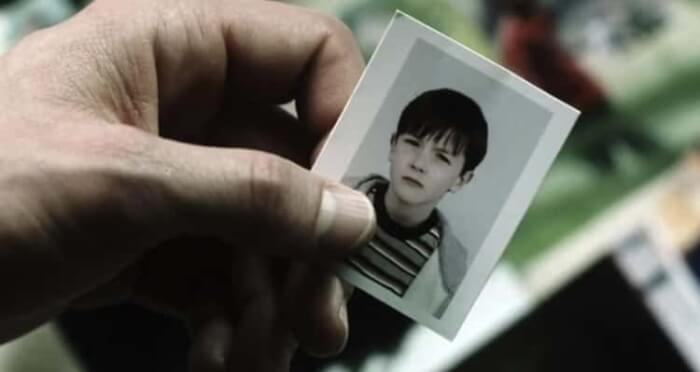 Source: 20th Century Fox
Source: 20th Century Fox
Anderton embarks on a protracted path of grief and acceptance as a result of the mystery surrounding Sean's abduction. At first, Anderton holds unwaveringly to the notion that Precrime can shield other parents from suffering the same horrors. However, when he is set up to kill Crow, the notion that mediums can accurately foretell the future is called into question. Anderton is motivated by this uncertainty to investigate the murkiness at the heart of crime and the fatal secrets kept by its creator (Max Von Sydow). By doing this, he can accept the heartbreaking reality that not all crimes can be understood, much less foreseen, and that he will never know what happened to his kid.
#2 The Murderer In 'Three Billboards Outside Ebbing, Missouri'
 Source: Fox Searchlight Pictures
Source: Fox Searchlight Pictures
In the end, Dixon makes an effort to keep Mildred from harming herself. He assists in obtaining the DNA evidence necessary to establish the suspect's guilt after overhearing a stranger confess to the rape and murder of a teenager. Even though it turns out that the man is not guilty of the crime, Mildred is still set on killing him. She and Dixon have loaded a rifle into the back of her station wagon and are on the road in search of him towards the conclusion of the film. Mildred has given up on the idea of catching the person who killed her daughter, but she is still committed to getting even. The conclusion is unclear. Mildred and Dixon acknowledge having reservations about the assignment just before the credits start to roll, but the audience is never informed of their decision to carry out the murder. The film depicts a vengeance story without a specific victim, exposing the moral ambiguity of making heroes out of people who use violence to express their sadness.
#3 The Identity Of The Killer In 'The Pledge'
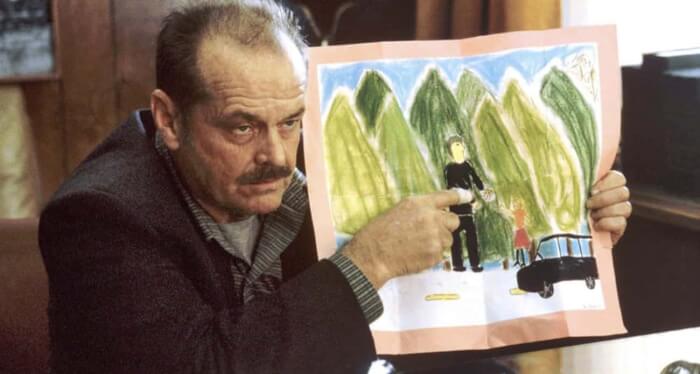 Source: Warner Bros.
Source: Warner Bros.
Rarely, like in The Pledge, do the characters not know the truth but the spectator does. Black will never be aware that the bad person is no longer alive. He will undoubtedly believe that the man is still out there committing terrible crimes for the rest of his life. This not only adds a tragic depth to an already painful story but also injects some realism. Even in the world of focused detective novels, natural forces are constantly at work. Black is a man whose obsession is so strong that he would never consider that something as unimportant as a vehicle accident may end the mystery. Black is doomed to be tormented by his preoccupation until it consumes him in the film since he is never given information about the killer's fate, making him oblivious that the case has already been solved.
#4 What Happened To Percy Fawcett In 'The Lost City of Z'
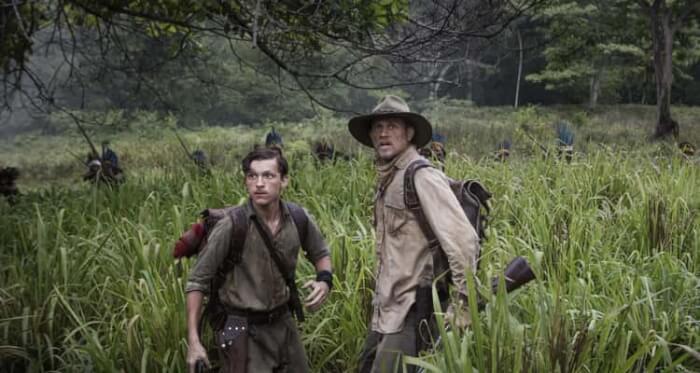 Source: Amazon Studios
Source: Amazon Studios
James Gray, the film's writer and director, made the decision to embrace the story's inherent ambiguity. He utilizes the conclusion to commemorate Fawcett and Nina's commitment to pursuing the unknown rather than providing a definitive solution to the riddle. In the version of the disappearance depicted in the film, Indians capture Percy (Charlie Hunnam) and Jack (Tom Holland). The Indians decided to "find a place for his spirit" after determining that Fawcett is neither a member of the tribe nor a part of the outside world. The men are drugged and carried on their shoulders through the pitch-blackness in the direction of a sea of glistening lights. A massive plume of smoke can be seen off in the distance, suggesting a sizable settlement. In a flashback that cuts between one event and another, Nina implores Fawcett to remember the poet Robert Browning's famous words, "A man's reach should transcend his grasp, or what's a heaven for?" Several decades after her abduction, Nina is seen leaving the conservative Royal Geographic Society in London in the film's last frame. She seems to step right into the lush Amazon in the hallway mirror's reflection. The movie honors the spirit of Fawcett's adventurousness and Nina's yearning to join him by asserting its version of events as fantasy rather than history by presenting such a surreal final image.
#5 What Happened To The Girls In 'Picnic at Hanging Rock'
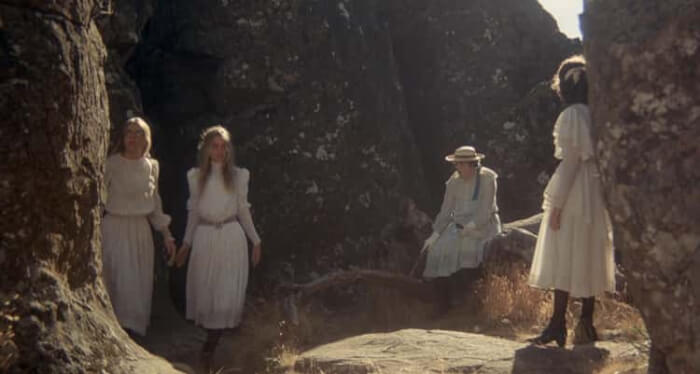 Source: Atlantic Releasing Corporation
Source: Atlantic Releasing Corporation
Picnic at Hanging Rock is probably a frustrating movie to watch for anyone who likes simple mysteries. Even while the headmistress of the students says there must be a plausible explanation, its emphasis on gauzy images and cryptic reflections on the natural world offer no opportunity for a rational deduction. Since the mystery has never been solved, there are many possible explanations, including the likelihood that nothing happened or that a supernatural force is responsible for everything. Some see the film as a metaphor for the alienation that white European settlers of Australia feel toward the strange, foreign land they live in. Weir was enthralled by the concept of what it meant to vanish, to "be neither alive nor dead." He says that certain riddles are not meant to be answered.
#6 The Whole Truth About The Slain Samurai In 'Rashomon'
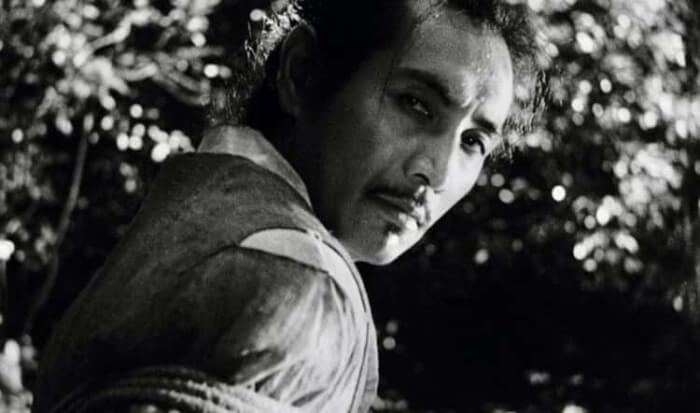 Source: RKO Radio Pictures
Source: RKO Radio Pictures
Before the movie's filming started, Kurosawa's three assistant directors contacted him, upset by the script's ambiguity and curious as to who had conveyed the truth about the samurai's dying. If they thoroughly read it, they would understand, Kurosawa retorted. He was saying that the character traits that the many stories of the events convey about each participant, not who killed the samurai, were the key to solving the mystery. A more exact truth is shown by the four eyewitness accounts of the incident than by a mere retelling of the events.
#7 The Identity Of The Zodiac Killer In 'Zodiac'
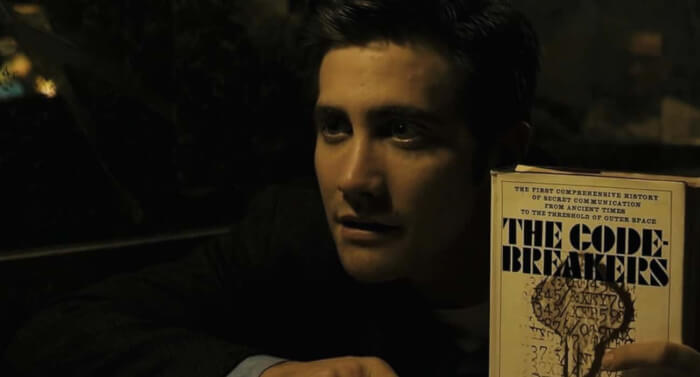 Source: Paramount Pictures
Source: Paramount Pictures
In large part in response to the Clint Eastwood film, Dirty Harry, which is also based on the case, Fincher was keen to make Zodiac historically correct. Fincher believed that the Zodiac Perpetrator's simplicity and dread were oversimplified in Eastwood's film, undermining the efforts of the real-life investigators who worked on the unsolved case. Fincher was "[a]ppalled" by how simply the killer is identified in the film. Zodiac isn't a tight whodunit; instead, it focuses on Graysmith's growing fixation with the unanswered question and the lingering impact of one of the most notorious serial killers in American history.
#8 The Actual Biological Father In 'Mamma Mia!'
 Source: Universal Pictures
Source: Universal Pictures
Sophie believes she needs her father to convince her to walk down the aisle, but while looking for him, she discovers issues with her mother that needs to be worked out. Sophie gains four new parents, not one: In addition to finding loving father figures in the three men, she rekindles her relationship with her mother, who finally receives the distinction of leading her daughter down the aisle. In the end, they all agree that a paternity test would be detrimental rather than helpful. All three guys can be equally loving and valuable in Sophie's life as long as the question is left unanswered. Mamma Mia! evolves into a mother/daughter love story that considers the broader definition of family from what appears to be a basic rom-com with a predictable ending.
#9 Anna's Disappearance In 'L’avventura'
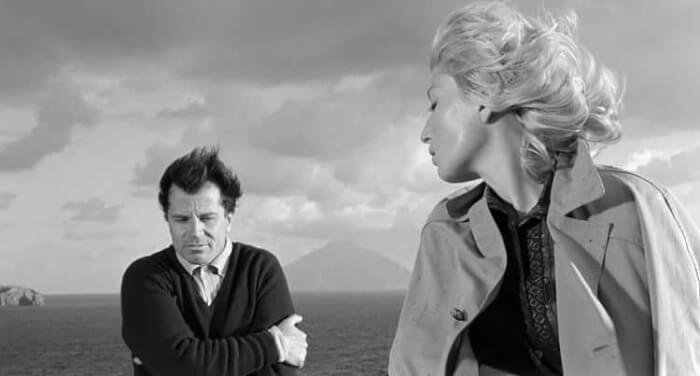 Source: Janus Films
Source: Janus Films
Anna's disappearance is used by L'Avventura to highlight the disregard for those who are left behind. It's a very beautiful exposé of self-involvement. The protagonists' lovely features and their opulent surroundings contrast sharply with the nothingness at the center of their universe. The attention shift, which obscures the mystery surrounding Anna's mysterious absence in favor of the drama between Sandro and Claudia, is as detrimental to the audience as it is to the characters. As the film goes on, Anna's dissatisfaction with her privileged life is increasingly comprehensible. She came out as spoiled and disrespectful at first. By the time the story is over, she seems to be the only one still aware of the self-inflicted suffering they are all experiencing.
#10 Who Wrote Don The Letter In 'Broken Flowers'
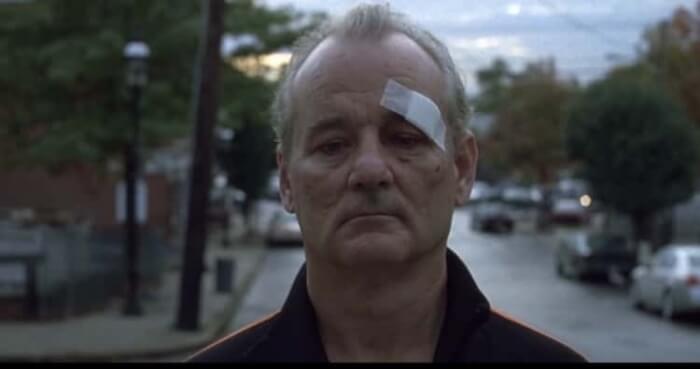 Source: Focus Features
Source: Focus Features
But it's obvious that this isn't the case. An unpleasant encounter between Don and a teenage hitchhiker exposes how devoted he is to be a father and gives Don optimism that he has at last met his son. At the end of the film, Don stands by himself in the middle of the street, starting over. But as opposed to the emotionlessness he displayed at first, the look on his face is more indicative of remorse and regret. Don hasn't found the answer to the riddle of the anonymous letter, but in trying to learn the truth, he's changed from being uncaring to having a sense of longing.
#11 The Identity Of The Killer In 'Memories of Murder'
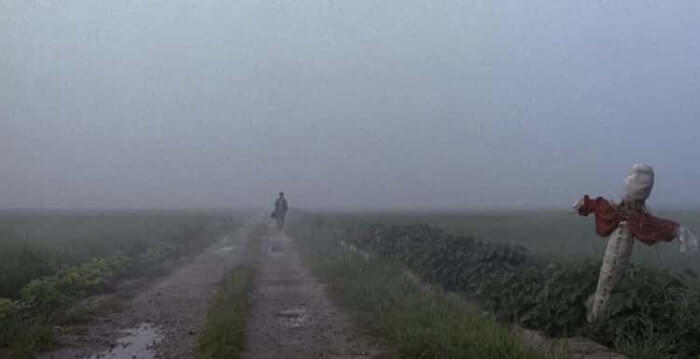 Source: Palm Pictures
Source: Palm Pictures
The film's concluding shot adds bold, unexpected punctuation to the ambiguous conclusion. Over ten years after failing to solve the case, Park, who is now a salesman, goes back to the unassuming scene of the first incident in 2003. A young girl approaches and remarks that another man had just left while remembering something he had done there decades earlier. In order to look straight into the audience and break the fourth wall, Park turns his head toward the camera. He is still looking for the precise moment of eye contact that, in his opinion, will reveal the offender. The fact that the genuine serial killer was found in 2019 does little to lessen the impact of this ultimate blow. Memories of Murder emphasizes the immediacy and proximity of the past by focusing on how the two cops' failed inquiry haunts them. Some wounds never heal, even if they just exist in memory, whether they are the result of a cold case or an authoritarian administration.
#12 The Goy's Teeth In 'A Serious Man'
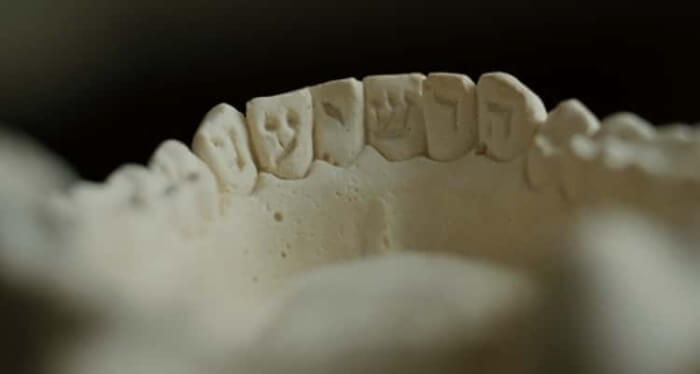 Source: Focus Features
Source: Focus Features
This story looks to be another case of Larry receiving poor spiritual counsel. However, in actuality, it serves as an example of the philosophical premise of the entire film. The Torah's teaching to "Receive with simplicity all that happens to you" serves as the movie's epigraph. Physics professor Larry explains the Uncertainty Principle, a formula that demonstrates that "we can't really actually know what's going on," as the mathematical counterpart of this adage. But as the misfortune mounts, Larry becomes more and more adamant that there is no meaning to his suffering. The goy's teeth tale serves as an example of how certain mysteries—even those that must have an answer—cannot be resolved and how contentment comes from embracing the state of unresolvedness. The Uncertainty Principle and the value of giving up curiosity in favor of acceptance are both reinforced just when Larry seems to have finally assimilated this lesson.
#13 Who Was Sending The Video Tapes In 'Caché'
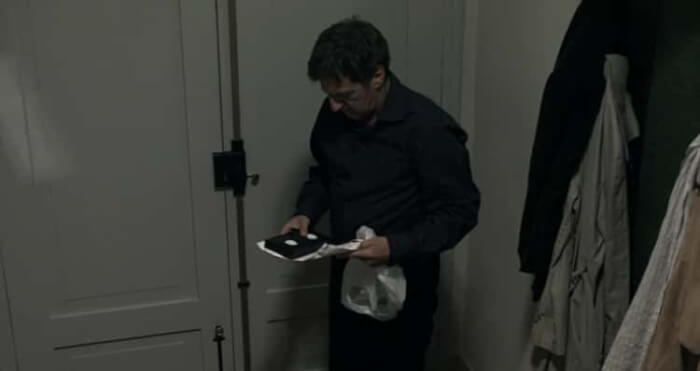 Source: Sony Pictures Classics
Source: Sony Pictures Classics
The recordings expose Georges' shame and secrecy that he has endured since lying about Majid. His growing paranoia and attempts to reveal the man end up acting more like retaliation than like repentance, which causes yet another disaster. Even though the identity of the person who made the tapes remains unknown by the film's conclusion, Georges is unable to continue to live happily in his middle-class bubble. A meeting between Pierrot and Majid's son is depicted in the film's closing frame, which some viewers have deduced to be the solution to the puzzle. Haneke contends that anyone who questions who sent the tapes after watching the film has missed the point, though. He maintains that "how we treat our conscience and our remorse and reconcile ourselves to living with our deeds" is the essential challenge. By keeping the sender of the tapes a secret, the film keeps Georges in a constant state of anxiety and upholds his position as the only character with unmet responsibility for his actions.
#14 The Identity Of The Killer In 'Black Christmas'
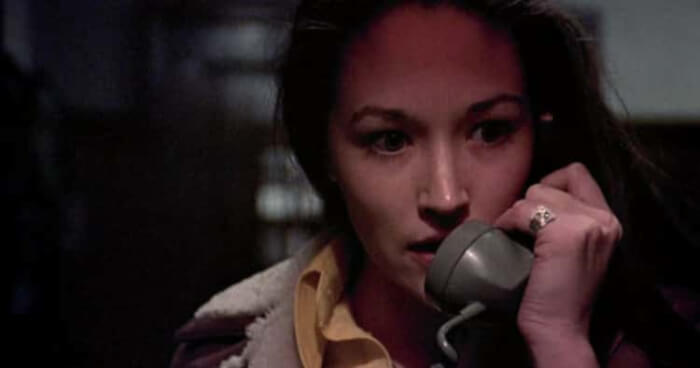 Source: Warner Bros.
Source: Warner Bros.
The horror genre is filled with murderers whose physical appearances are as horrifying as their horrible actions, from Leatherface to Pennywise the Clown. However, by keeping the murderer a secret in Black Christmas, Clark not only permits the threat posed by the character to persist unabatedly but also forces every viewer to put their anxieties onto him. The slasher can assume an infinite variety of terrible forms because they never have a face or a backstory, making them potentially even more terrifying than Freddy Krueger or Michael Myers.
Share this article
Advertisement